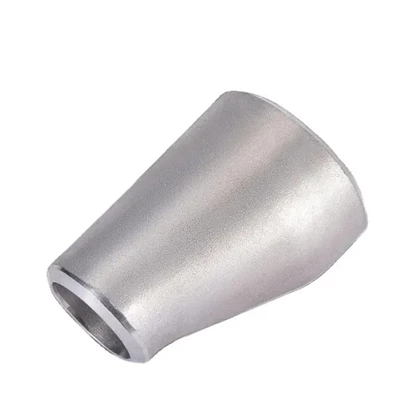Size Standards And Applications Of Reducers
In pipeline engineering and equipment manufacturing, concentric reducer, as crucial fittings connecting pipes of different diameters, are widely used in industries such as petroleum, chemical, construction, and food processing.
This article will detail the dimensional standards for reducers, helping industry professionals understand their importance and how to select the appropriate size in practical applications.
Reducer Dimensional Standards
The dimensional standards for reducers can vary depending on different national and industry standards. Common standards include ISO, ASME, and GB. These standards specify different shapes, size ranges, and material requirements for reducers. In practical use, users need to select the appropriate standard based on specific pipeline design requirements.
1. ISO Standard
According to ISO 7005, the dimensions of stainless steel concentric reducer are based on the nominal diameter (DN) of the pipe, using a size ratio (D/d). The standard clearly specifies the thickness, length, and connection method of the concentric pipe reducer to ensure the safety and stability of the pipeline system.
2. ASME Standard
ASME B16.9 specifies the dimensional and wall thickness requirements for steel pipe reducer, applicable to the design and construction of systems such as pressure vessels and chemical pipelines. ASME standards clearly define the applicable scope of reducers made of different materials, especially for applications under high temperature and high pressure conditions, providing more stringent dimensional and material specifications.
3. GB Standards
In China, the GB/T 12459 standard provides detailed specifications for the dimensions and connection methods of 2 to 1.5 tri clamp reducer. This standard applies to steel reducers used in industries such as chemical and energy, and specifies multiple technical requirements including dimensions, wall thickness, and shape. Based on the characteristics of Chinese processes, the GB standard emphasizes the tolerance range of dimensions and adaptability to the operating environment.
Common Size Specifications of Reducers
The size specifications of reducers are generally divided into several aspects, including outer diameter, inner diameter, wall thickness, and length. Common standard size specifications include:
-
Outer Diameter: Common sizes include DN50, DN80, and DN100, suitable for pipelines with different flow requirements.
-
Wall Thickness: Depending on the pressure to be subjected, wall thicknesses are typically available in various specifications such as SCH5, SCH10, and SCH40.
-
Length: The standard length is usually 300mm to 1000mm; custom lengths can be made according to customer requirements in special cases.
Factors to Consider When Selecting Reducers
1. Medium Properties
The first consideration when selecting conical reducer is the medium being transported in the pipeline. For example, pipelines transporting high-temperature, highly corrosive media require reducer materials with high corrosion resistance and high-temperature resistance, such as stainless steel or alloy materials.
2. Operating Pressure and Temperature
Operating pressure and temperature are crucial factors influencing reducer selection. Selecting reducers with appropriate wall thickness and materials according to design requirements ensures normal operation of the pipeline under high pressure or high temperature conditions, preventing pipeline rupture or leakage due to pressure fluctuations.
3. Pipe Size
The size selection of the reducer is directly related to the pipe size. Generally, the outer and inner diameters of the reducer should be selected based on the nominal diameter (DN) of the pipe to ensure a tight connection and avoid installation difficulties or poor sealing due to size mismatch.
Application Examples of Reducers
3 to 2 tri clamp reducer are widely used in oil and gas transportation, chemical transportation, and water supply pipeline systems. In the oil and gas field, reducers are often used to connect pipelines of different specifications and ensure constant fluid pressure during transportation. In the chemical industry, reducers are commonly used to connect reactors, storage tanks, and pipelines of different sizes, ensuring system safety and stability.
Conclusion
Whether in high-pressure systems or ordinary pipelines, the correct selection and use of reducers can effectively improve system operating efficiency. As global engineering projects continue to advance, reducer size standards are constantly evolving and improving. For industry professionals, understanding different standards and selection principles is crucial to better meet project needs and ensure the smooth progress of projects.
